UnderMiner
Silver Member
- Joined
- Jul 27, 2014
- Messages
- 3,993
- Reaction score
- 10,537
- Golden Thread
- 2
- Location
- New York City
- 🥇 Banner finds
- 2
- Detector(s) used
- Minelab Excalibur II, Equinox 800
- Primary Interest:
- All Treasure Hunting
So yesterday I had the day off, the tide was low so I hit the beach at my favorite hunting spot with the Excal-II. Searched for a couple hours but only found clad, lead sinkers, and aluminum. Around 11:30 AM I decided to hit one of my favorite "dumps", really a waste transfer station, and look for treasure among the junk they always get in. Made a very neat find there, first time in awhile actually, usually they have just garbage - but today they had the entire contents of someone's house that a junk-removal company had dropped off earlier in the day! This find was very unique and had probably the most diverse grouping of treasures I've ever found all at once.
Here is a picture I took of the pile of junk that was full of neat treasures.
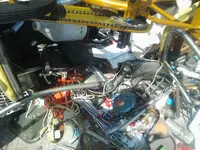
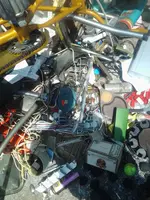
Among all that junk on the ground I was able to find these 11 pieces of solid silver cutlery. They are mostly 80% silver spoons and forks made by the German company "Vereinigte Silberwarenfabriken" in Dusseldorf. But also included was a Sterling silver butter knife (lower left):
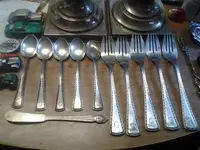
The "800" 80% silver stamps (I'm very good with markings, even obscure ones like these):
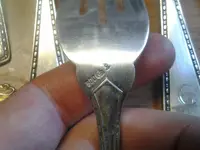
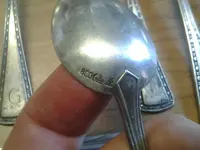
And for those of you more interested in coins than in cutlery this hunt will not disappoint you. If you look in the second photo of the junk pile pictured above you will see a cigar box in the lower right corner. In that box I found a small mint tin, as seen below, and inside the tin I fond 20 coins - mostly wheat cents (3 from 1918, 1 from 1919, even a war cent) - but also included was a very special coin that is a first for me - a 1903 Sterling Silver King Edward VII UK Sixpence! My first ever Sterling Silver Sixpence! And boy do I love everything from this period in history, the early Edwardian Age is among my favorites, right behind the Victorian!
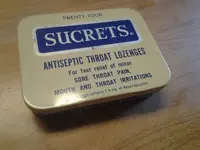
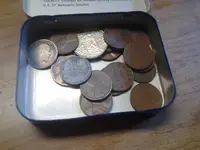
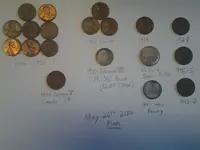
Close up of my favorite coin from the little collection:
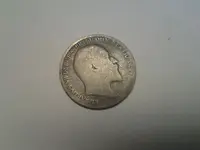
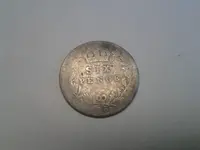
And I also found some matchbox cars. My favorite being this rare Snow-Trac - still with its original rubber tracks, it is in very good condition - as are all the little cars I found.
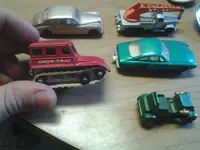
My silver on the scale, over 386 grams, not including the sixpence (2.8g):
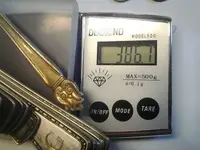
But wait... the story is not over yet. Later in the day I went to the grocery store, checked the coin star, and low and behold the change return slot was overflowing with coins! No silver, but I did find a bicentennial quarter. And yes, considering my luck streak I used $1 of that change to buy a scratch off lotto ticket, scratched it with the bicentennial quarter for luck - and... I lost, lol! And so my day's luck had finally come to an end.
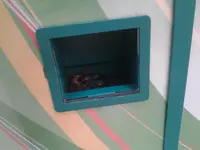
Edit: Just a side note for you history buffs out there, just a fun fact - Vereinigte Silberwarenfabriken, the German company that made the spoons and forks I discovered was founded in 1899 and it made custom silver cutlery for at least a few members of Hitler's Third Reich. One of which was Rudolf Hess, who had the monogram RH on his spoons and forks. Apparently some American GI's plundered Hess's silver in the war and brought it back to the US. That got me thinking - what does the "G" monogram on my set stand for. A cold sweat descended upon me for a second when the name Goring popped into my head. Herman Goring was a big collector of treasures especially silverware and no doubt many of his things were likely plundered and brought back to the US after the war. So I looked up what Goring's silverware monogram looked like, and I was kinda relieved when I discovered his monogram was much different than the one on my set. So no Nazi treasure here, thankfully, though it would have been kinda cool (although unsettling).
Here is a picture I took of the pile of junk that was full of neat treasures.


Among all that junk on the ground I was able to find these 11 pieces of solid silver cutlery. They are mostly 80% silver spoons and forks made by the German company "Vereinigte Silberwarenfabriken" in Dusseldorf. But also included was a Sterling silver butter knife (lower left):

The "800" 80% silver stamps (I'm very good with markings, even obscure ones like these):


And for those of you more interested in coins than in cutlery this hunt will not disappoint you. If you look in the second photo of the junk pile pictured above you will see a cigar box in the lower right corner. In that box I found a small mint tin, as seen below, and inside the tin I fond 20 coins - mostly wheat cents (3 from 1918, 1 from 1919, even a war cent) - but also included was a very special coin that is a first for me - a 1903 Sterling Silver King Edward VII UK Sixpence! My first ever Sterling Silver Sixpence! And boy do I love everything from this period in history, the early Edwardian Age is among my favorites, right behind the Victorian!



Close up of my favorite coin from the little collection:


And I also found some matchbox cars. My favorite being this rare Snow-Trac - still with its original rubber tracks, it is in very good condition - as are all the little cars I found.

My silver on the scale, over 386 grams, not including the sixpence (2.8g):

But wait... the story is not over yet. Later in the day I went to the grocery store, checked the coin star, and low and behold the change return slot was overflowing with coins! No silver, but I did find a bicentennial quarter. And yes, considering my luck streak I used $1 of that change to buy a scratch off lotto ticket, scratched it with the bicentennial quarter for luck - and... I lost, lol! And so my day's luck had finally come to an end.


Edit: Just a side note for you history buffs out there, just a fun fact - Vereinigte Silberwarenfabriken, the German company that made the spoons and forks I discovered was founded in 1899 and it made custom silver cutlery for at least a few members of Hitler's Third Reich. One of which was Rudolf Hess, who had the monogram RH on his spoons and forks. Apparently some American GI's plundered Hess's silver in the war and brought it back to the US. That got me thinking - what does the "G" monogram on my set stand for. A cold sweat descended upon me for a second when the name Goring popped into my head. Herman Goring was a big collector of treasures especially silverware and no doubt many of his things were likely plundered and brought back to the US after the war. So I looked up what Goring's silverware monogram looked like, and I was kinda relieved when I discovered his monogram was much different than the one on my set. So no Nazi treasure here, thankfully, though it would have been kinda cool (although unsettling).
Last edited:
Upvote
22




